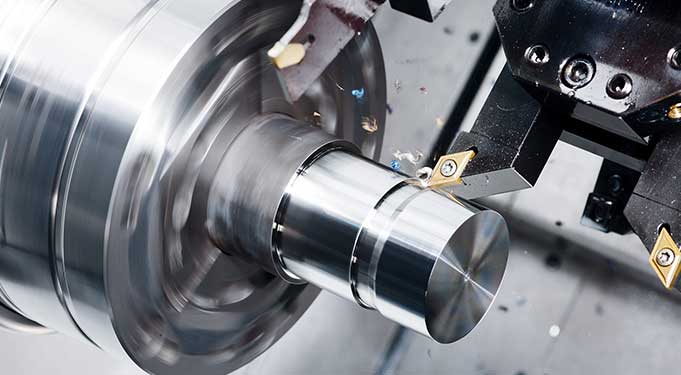Time to read: 6 min

The Fundamentals of Turning Operations
Turning is a fundamental machining process that revolves around a rotating workpiece and a cutting tool moving along a linear path. Performed on a lathe, this method is instrumental in crafting cylindrical components with high precision.
The Turning Process at a Glance
- Setup: Preparing the CNC lathe and securing the workpiece for stable rotation.
- Tool Selection: Choosing the appropriate cutting tools based on material and design requirements.
- Program Loading: Inputting the CNC program that dictates workpiece rotation and tool movement.
- Machining Operation: Executing the machining process with real-time adjustments for optimal results.
- Real-time Monitoring: Using sensors to monitor and maintain consistency and quality.
Diverse Turning Operations
Each turning operation is tailored to achieve specific outcomes, from shaping, threading, and boring to knurling and parting.
Turning
- Description: Shaping workpieces using a single-point cutting tool.
- Advantages: Efficiency, precision, versatility.
- Applications: Shafts, bushings, axles, pins.
Tapping
- Description: Creating internal screw threads using a tap.
- Advantages: Strong connections, standardization.
- Applications: Assembling threaded holes in various industries.
Threading
- Description: Carving external screw threads on the workpiece's outer diameter.
- Advantages: Strong and standardized assembly.
- Applications: Manufacturing threaded rods, bolts.
Boring
- Description: Refining and enlarging existing holes.
- Advantages: Dimensional accuracy, improved surface finish.
- Applications: Enlarging holes for bearings, shafts.
Knurling
- Description: Creating textured patterns for better grip.
- Advantages: Improved grip, aesthetic appeal.
- Applications: Handles, knobs, parts requiring a secure grip.
Reaming
- Description: Refining the accuracy and finish of existing holes.
- Advantages: Precision, smooth internal surfaces.
- Applications: Precise fits in bearing housings.
Drilling
- Description: Creating cylindrical holes.
- Advantages: Versatility, efficiency.
- Applications: Holes for fasteners, pins.
Facing
- Description: Flattening end faces of workpieces.
- Advantages: Creating reference surfaces.
- Applications: Flat surfaces for mating, bearings.
Grooving
- Description: Cutting grooves or channels around the workpiece.
- Advantages: Functional channels, parting off.
- Applications: Channels for O-rings, snap rings.
Parting
- Description: Separating components from raw bar stock.
- Advantages: Efficiency, cost-effectiveness.
- Applications: Producing multiple parts from a single material bar.
Choosing the Right Turning Operation
Selecting the appropriate turning operation depends on factors such as material type, dimensional accuracy, surface finish, and the desired shape and features of the part.
Conclusion
CNC turning is a versatile and precise manufacturing process, suitable for a wide range of materials and part geometries. Understanding the different types of turning operations and their specific applications is crucial for achieving the best results in your projects.
Unofactory offers comprehensive CNC turning services, leveraging state-of-the-art technology and skilled technicians to deliver high-quality custom prototypes and production parts. Our expertise ensures precise turned parts that meet your exact specifications.




